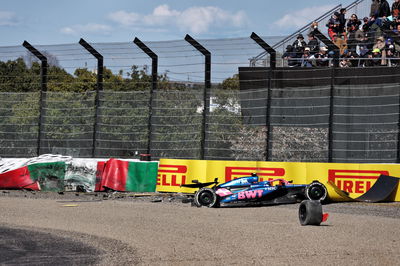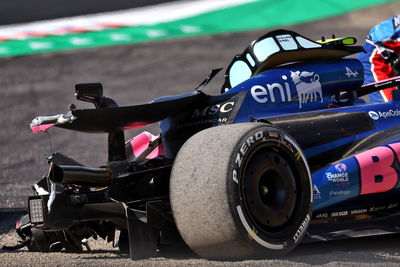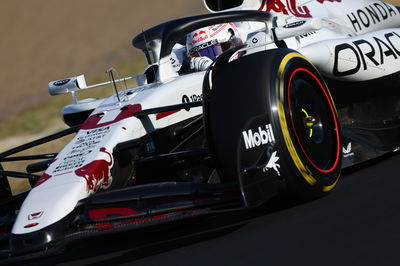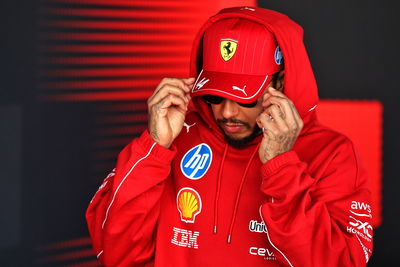Long run data analysis shows F1 teams disrupted by chaos in Japanese GP practice
Who is looking fast and who is in trouble after an unusual first day at Suzuka?

A heavily-disrupted second practice at Suzuka has severely compromised Formula 1 teams’ preparations for the Japanese Grand Prix.
FP2 was punctuated by no fewer than four red flags, leading to one of the most bizarre sessions in recent F1 history.
F1 driver-turned-pundit Jacques Villeneuve quipped that "the teams might as well have not done that practice”, given the red flags were out for almost two-thirds of the session.
F1 teams left without data at F1 Japanese Grand Prix

The stoppages were so long - and frequent - that some drivers even failed to complete a qualifying simulation, with Red Bull’s recruit Yuki Tsunoda and Mercedes rookie Andrea Kimi Antonelli among those unable to set a flying lap on soft tyres.
The driver who emerged the worst from Friday practice was Alpine’s newcomer Jack Doohan. Already having to vacate his seat in FP1 for reserve driver Ryo Hirakawa, the Australian had just completed four laps in the afternoon when he suffered a high-speed shunt at Turn 2.
The cause of the accident - which triggered the first and the longest red flag of the session - is yet to be determined, but the damage to the car was so substantial that it would almost warrant a chassis change.
As such, Doohan will have just one hour available on Saturday morning to put his newly-rebuilt car through its paces and complete his preparations for the remainder of the week. Given he has never driven at Suzuka before, this weekend will be a little more than a glorified test for the under-pressure rookie.
Doohan can take some encouragement from the fact that other teams also completed limited running on a dramatic opening day in Japan.
After the second red flag in FP2 - caused by Fernando Alonso - was cleared, there were still 20 minutes left on the clock. But bizarrely, the grass caught fire twice in the final quarter of the session, causing two more stoppages and bringing an early end to a dramatic session.
This means that teams weren’t able to complete any long runs, potentially making Sunday’s race a journey into the unknown. This puts them in a similar situation to what they faced in the Chinese GP, when they weren’t able to complete a single lap on hard tyres in practice.
As it turned out, the hard tyre was more durable than expected, prompting most teams to switch to a one-stop strategy midway through the race. Those who stuck to a two-stop strategy, including Ferrari’s Lewis Hamilton and Racing Bulls duo Tsunoda and Isack Hadjar, paid the price for giving up track position for fresher tyres.
Admittedly, the situation is still not as bad as it was in China, with teams having already collected some data on Friday morning. FP3 would also be useful in bringing them up to speed.
However, there is no denying that FP2 is the most representative session on any race weekend, given it takes place at the same time and in roughly the same conditions as qualifying and the race. So the lack of information from Friday afternoon will most definitely hurt them.
Nevertheless, it’s important to analyse the data from FP1 to gauge where each team stands heading into Saturday. Of course, none of the drivers managed to complete a proper long run, but teams will still be analysing tyre degradation and any sudden drop in performance to hone in their set-ups overnight.
Long-run FP1 data at F1 Japanese Grand Prix
Driver | Team | Average lap | Laps counted |
George Russell | Mercedes | 1m33.240s | 8 |
Lando Norris | McLaren | 1m33.361s | 7 |
Oscar Piastri | McLaren | 1m33.374s | 8 |
Charles Leclerc | Ferrari | 1m33.566s | 8 |
Lewis Hamilton | Ferrari | 1m33.769s | 6 |
Andrea Kimi Antonelli | Mercedes | 1m34.121s | 7 |
Max Verstappen | Red Bull | 1m34.432s | 8 |
Yuki Tsunoda | Red Bull | 1m34.848s | 6 |
While it is difficult to draw a complete picture, it’s clear from George Russell’s pace that Mercedes can be a serious threat to McLaren in the Japanese GP.
Russell was already rapid in both Australia and China, so his early pace at Suzuka suggests that the W16 can be competitive at a wide variety of tracks.
As again there was little to separate between Lando Norris and Oscar Piastri, while Charles Leclerc was also not too far behind the two in his Ferrari.
Red Bull’s lack of long-run pace could be a cause of concern, but it would be premature to rule Max Verstappen out of the podium fight.











